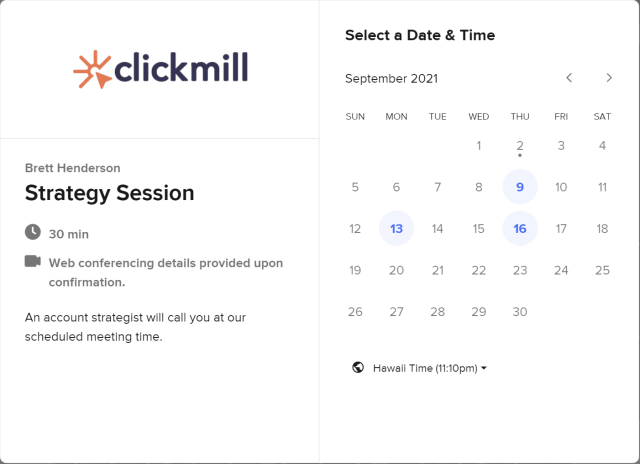Building an effective ministry means focusing your resources on a specific group instead of trying to reach everyone. To connect with your community, first identify who your ministry serves, then tailor your approach to meet their needs. The Bible shows how Jesus and the apostles focused on specific audiences. A simple 2-step process is to identify your audience and create programs that engage them.
Are you not getting the church growth you want even after investing lots of resources into building an effective ministry?
If this sounds like you, then you’ve come to the right place! This post will teach you how to engage your target church audience.
Let’s get right into it!
Most Churches Waste Resources Trying To Reach Everyone
The good news is that there is a specific group of people who are interested in your ministry! At the same time, it’s important to realize NOT EVERYONE is interested in your ministry.
While everyone who has not accepted Christ needs to be reached, not all of them can be reached by the gifts and talents that exist within your ministry.
The bullhorn strategy (shout at the top of your lungs to anyone around your church and hope someone listening shows up) doesn’t work anymore.
For example: Our vision is to help ministry leaders reach more people, more effectively. Do I go around handing out business cards to every person I see at the supermarket? Of course not. Instead, I connect specifically with ministry leaders (hint hint, that’s you).
While I could stand on a street corner downtown with a sign that advertises our marketing firm (surely someone passing by will be a ministry leader), I don’t do this.
The reason why I don’t go looking for ministry leaders at the supermarket is because the density of ministry leaders in that location is probably close to zero percent and when you consider that I can more effectively reach you online– holding a sign downtown is a massive waste of our resources.
We don’t even target ALL ministry leaders because some might not prioritize digital ministry strategies for one reason or another.
Stewarding your ministry resources (time, energy, finances, focus, and decisions) is step one of building an effective ministry.
You run a finite ministry with finite resources so it is literally impossible to reach everyone. Trying to do so will cost you your ministry’s success.
How Do We Reach Our Target Audience?
Let’s say 1% of the general population is ready to hear from you today. Searching in places of high population simply because there are a lot of people in those places will not lead you to the few people who are ready to accept your message.

So how do you reach that 1%?
Instead, let’s say that the 1% you want to reach are the single moms in your community. You’re not going to reach them by just going anywhere. Most places you go will only have 1 single mom out of any 100 people.
So where are they?
Single moms are more likely to be at a daycare dropping off their kids. Instead of channeling ministry resources into outreach events that are unlikely to bring in the people you are seeking, you should be asking, “How can I serve the daycare and the single moms who frequent them? At a daycare, single moms might be 50% of their clientele. With the same ministry resources, you can now reach your target audience at a rate of 1 in 2 instead of 1 in 100. Now that’s good marketing.
Ask yourself: How can I go to my target audience and meet their needs?”

Claim your ministry marketing strategy session today!
We Review Your Marketing Efforts & Show You Areas To Improve.
Ministering more effectively leads to more productive use of your budget, making you a better steward of your God-given resources.
Target Audiences in the Bible

Two people in the Bible who understood this concept were Jesus and the Apostle Paul.
Jesus ministered to those in the area of Israel because the Jews were His primary target audience. Jesus did NOT go all over the world, because that would have hindered Him from completing His mission in Israel.
Paul’s audience was the Gentiles, so he ministered to Rome and the surrounding areas because Paul’s primary audience was the Gentiles.
Side Note: I say “primary audience” because when we are given the opportunity to share the gospel, we will share it with anyone. In terms of your marketing budget and resource allocation, however, we need to be targeting specific audiences like Jesus and Paul.
But if you can only effectively reach people in a few specific places, how do you know which places you should go to?
*If you like this article and want to know more about church growth, check out our post, 10 Most Powerful Church Growth Strategies.
2-Step Process For Reaching Your Target Audience
When building an effective ministry, you can find and reach your target audience in two simple steps.
- Create a target audience profile
- Go to your audience wherever people in your target audience profile spend time!
A target audience profile is a demographic profile that helps your ministry to narrow down who you are reaching, and it looks something like this:
Clickmill’s Target Audience Profile:
- Name: Ministry leaders in the church
- Age Group: 30-40yrs old
- Gender: male
- Location: on Google and YouTube
- Annual Income: 30,000-40,000 per year
- Education: Bachelor’s or Master’s in Theology
- Motivations: Want to reach their communities for Christ
- Needs: Want to know how to effectively reach their communities for Christ, and can feel frustrated when their effort doesn’t bear the fruit they had hoped for.
Once you create your own target audience profile, it’s time to move on to step #2!
At Clickmill, we know our audience (that’s you) spends time on Google and YouTube so we create Keyword Targeted Content like blogs and videos to reach our audiences on those platforms that cater specifically to their needs.
If you want to learn more about how to make Keyword Targeted Content for your ministry marketing, you’ll love this article: Digital Marketing for Churches: The #1 Church Marketing Guide

Get to know your target audience and go to them, connecting with them through THEIR motivations and needs.
As you begin to implement this strategy, make sure to track the results you want.
For example: At Clickmill we track the number of people who download the free ebook at the bottom of this page and the number of ministry leaders who are booking free strategy sessions to see how effective our marketing strategies are working.

Claim your ministry marketing strategy session today!
We Review Your Marketing Efforts & Show You Areas To Improve.
If your strategy is not yielding your desired results, go back to your target audience profile to see what your audience wants, and try again. (You can even create a short poll and just ask them what they need!)
If you are specific about your target audience and are consistent with your strategy (ie, you are planting in good soil), you will begin to see the results you are looking for!
If you want even more on this topic, check out the video below titled: Church Marketing Strategies: Why you’re Not Connecting With Your Ideal Audience.
Building An Effective Ministry FAQs
Targeting everyone is ineffective because not everyone will be interested or can be reached by the specific gifts and talents within your ministry. It’s important to focus on a specific group that aligns with your ministry’s strengths and resources, rather than trying to reach everyone and spreading your resources too thin.
To reach your target audience effectively, first create a detailed target audience profile, including characteristics like age, gender, location, motivations, and needs. Then, focus your outreach efforts in places where this audience spends time, and tailor your messaging to meet their specific needs and motivations.
A target audience profile helps narrow down who your ministry is trying to reach. It provides clarity and direction for your outreach efforts, ensuring that you are connecting with people who are most likely to be receptive to your ministry’s message and services.
Jesus focused his ministry on the Jews in Israel, and Paul targeted the Gentiles in Rome and surrounding areas. Both understood the importance of focusing on a primary audience to maximize their impact, rather than trying to reach everyone everywhere.
Ministries should track specific outcomes related to their targeted outreach efforts. This could include the number of people engaging with their content, the number of new visitors to their services, or the number of community members helped through their programs. Tracking these outcomes helps assess whether the strategy is working and where adjustments may be needed.
That about sums it up for this article on building an effective ministry and reaching your church audience.
What questions do you have about identifying your ideal audience?
Let us know in the comments.

Responses